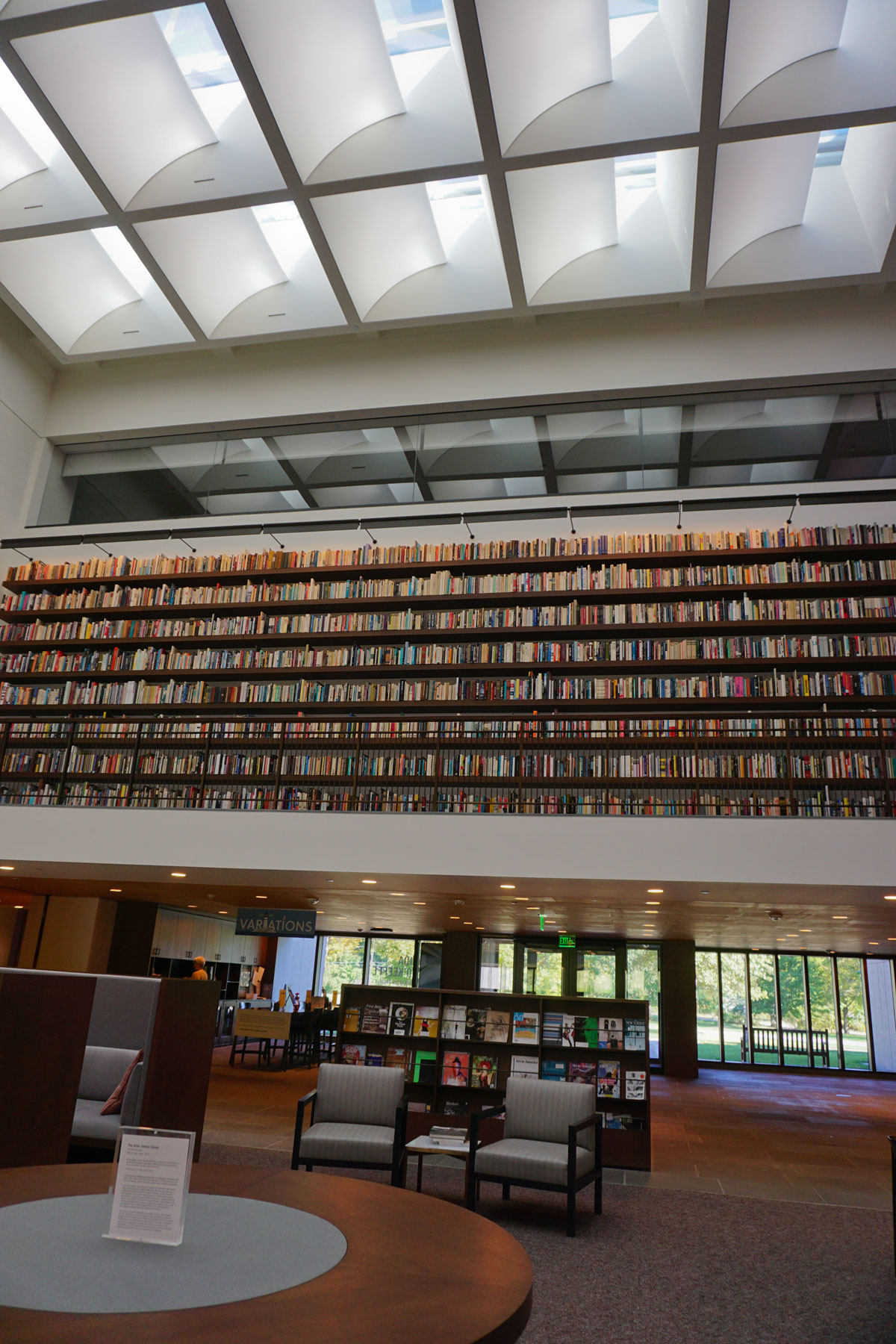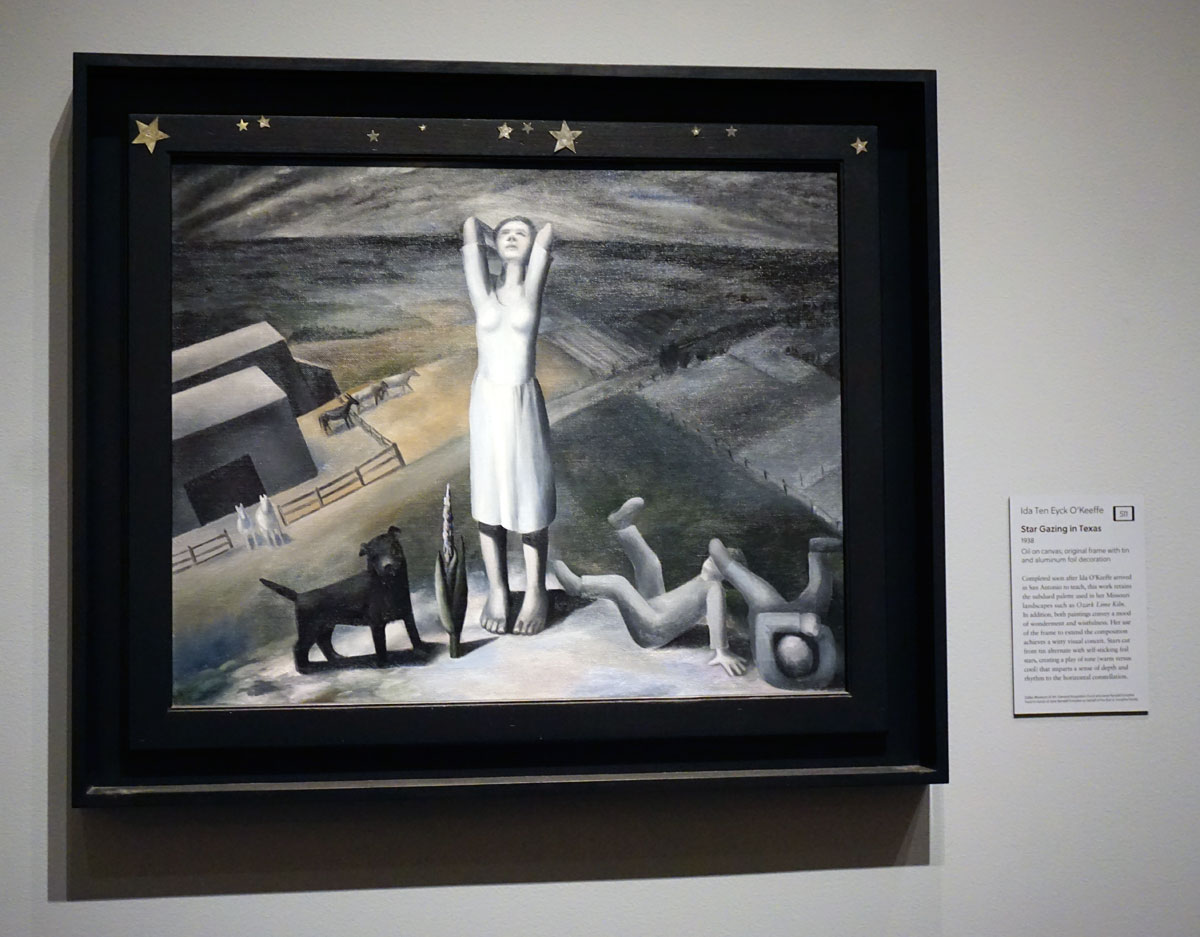After two months holiday back home in Ottawa/Gatineau, Canada, we got back on the road and entered the US on September 25th. Knowing the route we would follow, I communicated with libraries of universities and colleges for an artist visit to Special Collections and present my artists’ books.
My first stop was at The Sterling and Francine Clark Art Institute commonly referred to as The Clark in Williamstown, Massachusetts. The Clark is one of a small number of institutions that is both an art museum and a center for research, critical discussion, and higher education in the visual arts. The Artists' Books collection includes over 4,400 titles that represent a wide range of creative activity dating from the 1960s to the present.
© 2019 Louise Levergneux. Sterling and Francine Clark Art Institute in Williamstown, MA.
As I walked in The Clark, I noticed an installation of books. Allan Sekula, a thoughtful and thought-provoking artist, photographer, filmmaker, writer, and teacher amassed over decades a library that informed his prolific body of work and reflected his wide-ranging personal and professional interests. In 2015, the Clark library acquired the 15,000-volume library through the generous gift of the artist’s widow, art historian and professor Sally Stein. The collection, as shelved in the Manton Research Center Reading Room, is both an archive that maintains Sekula’s organization of the material in his personal and work spaces and a visually stunning art installation that allows varying levels of interpretation of format and content.
© 2019 Louise Levergneux. The Allan Sekula Library by Allan Sekula is an archival and research collection of volumes, which is held in the Library of the Clark Art Institute in Williamstown, MA.
© 2019 Louise Levergneux. The Allan Sekula Library by Allan Sekula.
I met Susan Roeper, Director of the Library, in the lobby of this wonderful mid-century designed building. I presented to the library my artists’ books and with great pleasure, my book Ambivalence is joining City Shields (acquired in 2002) and Faux-pas (acquired in 2011) as part of the artists’ book collection.
I got the chance to see a remarkable exhibition entitled Ida O’Keeffe: Escaping Georgia’s Shadow while visiting The Clark. This exhibition organized by the Dallas Museum of Art and curated by Sue Canterbury, The Pauline Gill Sullivan Associate Curator of American Art, investigates the little-known work of Ida Ten Eyck O’Keeffe (1889-1961).
© 2019 Louise Levergneux. Ida O’Keeffe: Escaping Georgia’s Shadow at The Clark.
© 2019 Louise Levergneux. Photo of Ida as part of the Ida O’Keeffe: Escaping Georgia’s Shadow Exhibition.
© 2019 Louise Levergneux. Still life with Fruit, oil on canvas 1926 by Ida Ten Eyck O’Keeffe.
The angst of unfulfilled promise infuses the exhibition while the thirty-five paintings, prints, and photographs give insight into Ida O’Keeffe’s life and reveal the artist’s mastery of color and composition. Despite numerous challenges, the talented modernist explored realism and abstraction from the 1920s through the 1940s. As the sister of the renowned artist Georgia O’Keeffe (1887–1986), Ida dealt with sibling rivalry that resulted in a family rift and the effect it had on her life and professional aspirations.
© 2019 Louise Levergneux. Ozark Lime Kiln, 1938, oil on canvas by Ida Ten Eyck O’Keeffe.
© 2019 Louise Levergneux. Star Gazing in Texas 1938, oil on canvas by Ida Ten Eyck O’Keeffe.
© 2019 Louise Levergneux. My favourite painting by da Ten Eyck O’Keeffe Variation on a Lighthouse Theme VII, 1931-32, oil on canvas.
After viewing the Ida O’Keeffe exhibition, I meandered outside to get a sense of the buildings and landscape of The Clark. The white marble Museum Building opened on May 17, 1955, after a three-year construction period.
© 2019 Louise Levergneux. The Museum Building re-conceived by Selldorf Architects in 2014; executive architect Gensler oversaw implementation of the renovations. Improvements included the addition of more than 2,200 square feet of new gallery space; a thoughtful renovation of the existing galleries; and installation of new lighting and environmental controls
The Clark's 140-acre campus encompasses a landscape of expansive lawns, meadows, and walking trails. The sweeping redesign of the Clark’s 140-acre grounds by the landscape architecture firm Reed Hilderbrand included creation of a three-tiered reflecting pool; upgrades to and expansion of walking trails; green roof systems; planting of some 1,000 new trees; and creation of a new entry drive and landscaped parking areas with water-permeable surfaces that feed into a rainwater and snowmelt collection system.
© 2019 Louise Levergneux. The landscape at The Clark.
This was an incredible day and a feast for the eyes and mind. My day started by a visit to FreeFall Laser cutting service in North Adams, Massachusetts which I will talk about in my next blog post.
On my way to Philadelphia, PA to see more artists and collections.











